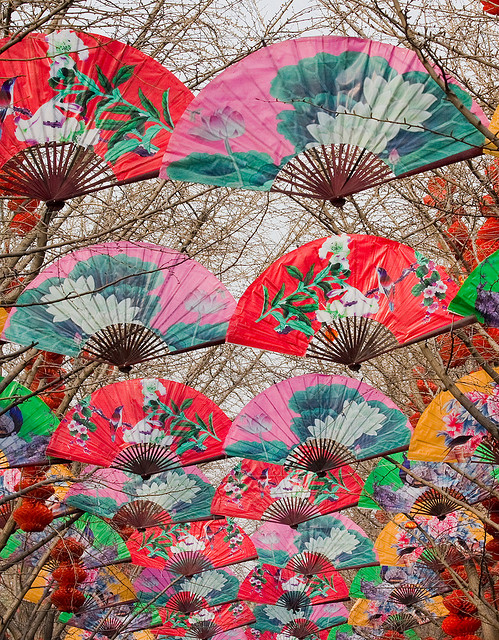Dates: Lunar New Year (between 19 January and 20 February)
Level of participation: 3 – there’s a host of activities relating to Chinese New Year, and your level of involvement is up to you.

Chinese New Year is celebrated around much of the world – where there’s a Chinatown there’s invariably a Chinese New Year party – but there’s something special about being in one of China’s major cities for the the high point of the Chinese year. You can expect colourful decorations but not a whole lot of public merrymaking; for the most part, this is a family festival.
Throughout the country, the weeks in the build-up to the festival are an explosion of colour, with chūnlián (spring couplets) pasted on door posts, door gods brightening up alleys and streets, and shops glistening with red and gold decorations. Work colleagues and relatives present each other with red?envelopes of money and the?streets ring with cries of ‘congratulations, make money’.
In Beijing, the White Cloud Temple, the?Lama Temple and other temples stage?entertaining miàohuì (temple fairs).?Celebrations are also held in parks such?as Ditan Park. At night the city echoes to?the sound of continuous fireworks.
In Shanghai there’s an explosion of?fireworks at midnight to welcome in the?New Year and ward off bad spirits, and?special services are held at Longhua?Temple and Jing’an Temple. Top restaurants are booked out well in advance?for niányèfàn (New Year’s Eve dinner). Another explosion of firecrackers on?the fifth day of the New Year heralds the arrival of the God of Wealth.
In Hong Kong there’s a parade on the first day of the New Year, a fantastic?fireworks display over Victoria Harbour on the second evening, and one of?the year’s largest horse races is held at Sha Tin on day three.?In mainland China the New Year holiday extends for seven days, and?legions of Chinese use it to head to the provinces to visit relatives – this?can be a very difficult time to try to travel around China. In Hong Kong it’s a?three-day holiday.